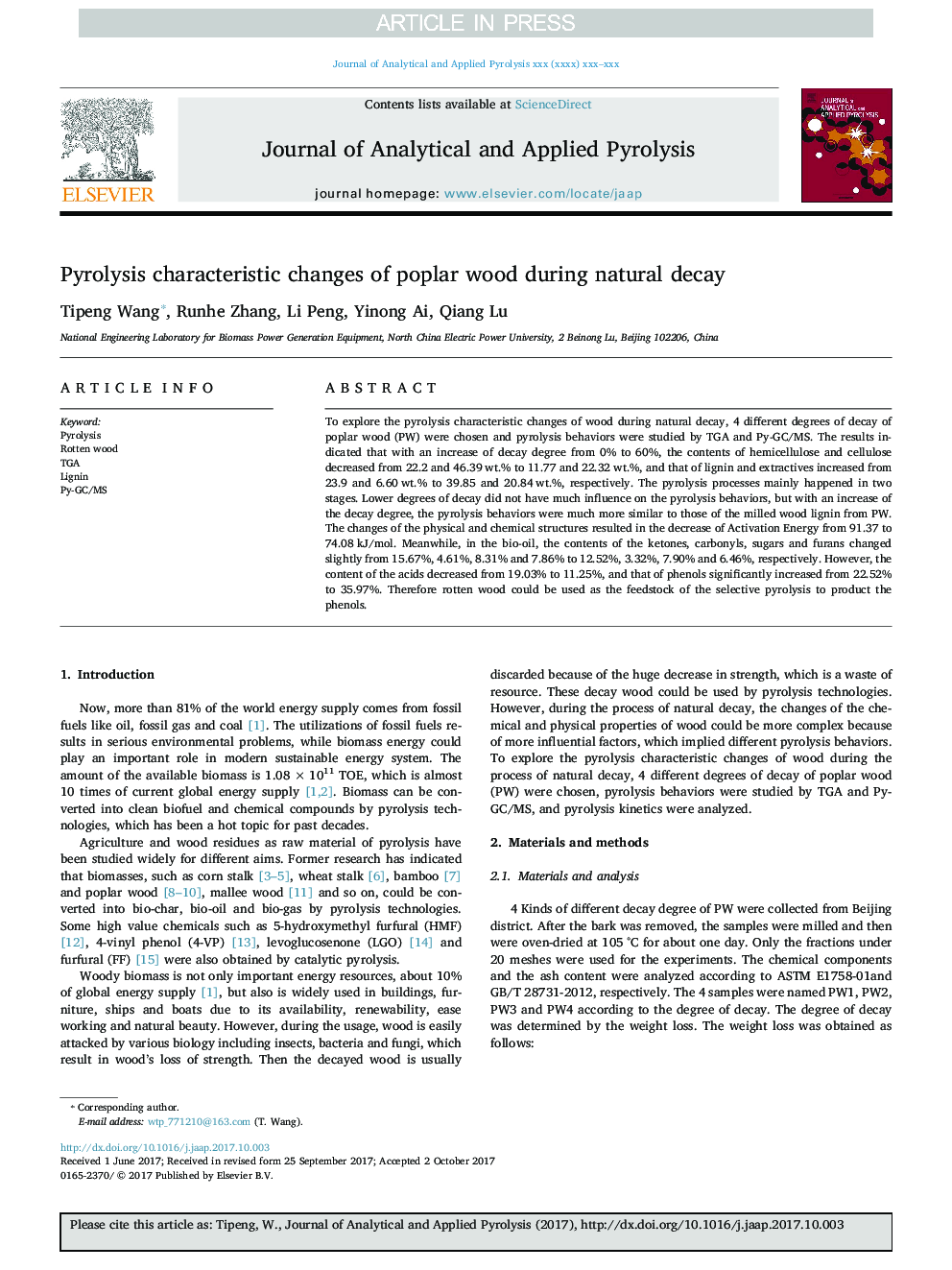| Article ID | Journal | Published Year | Pages | File Type |
|---|---|---|---|---|
| 7606519 | Journal of Analytical and Applied Pyrolysis | 2017 | 4 Pages |
Abstract
To explore the pyrolysis characteristic changes of wood during natural decay, 4 different degrees of decay of poplar wood (PW) were chosen and pyrolysis behaviors were studied by TGA and Py-GC/MS. The results indicated that with an increase of decay degree from 0% to 60%, the contents of hemicellulose and cellulose decreased from 22.2 and 46.39Â wt.% to 11.77 and 22.32Â wt.%, and that of lignin and extractives increased from 23.9 and 6.60Â wt.% to 39.85 and 20.84Â wt.%, respectively. The pyrolysis processes mainly happened in two stages. Lower degrees of decay did not have much influence on the pyrolysis behaviors, but with an increase of the decay degree, the pyrolysis behaviors were much more similar to those of the milled wood lignin from PW. The changes of the physical and chemical structures resulted in the decrease of Activation Energy from 91.37 to 74.08Â kJ/mol. Meanwhile, in the bio-oil, the contents of the ketones, carbonyls, sugars and furans changed slightly from 15.67%, 4.61%, 8.31% and 7.86% to 12.52%, 3.32%, 7.90% and 6.46%, respectively. However, the content of the acids decreased from 19.03% to 11.25%, and that of phenols significantly increased from 22.52% to 35.97%. Therefore rotten wood could be used as the feedstock of the selective pyrolysis to product the phenols.
Related Topics
Physical Sciences and Engineering
Chemistry
Analytical Chemistry
Authors
Tipeng Wang, Runhe Zhang, Li Peng, Yinong Ai, Qiang Lu,
